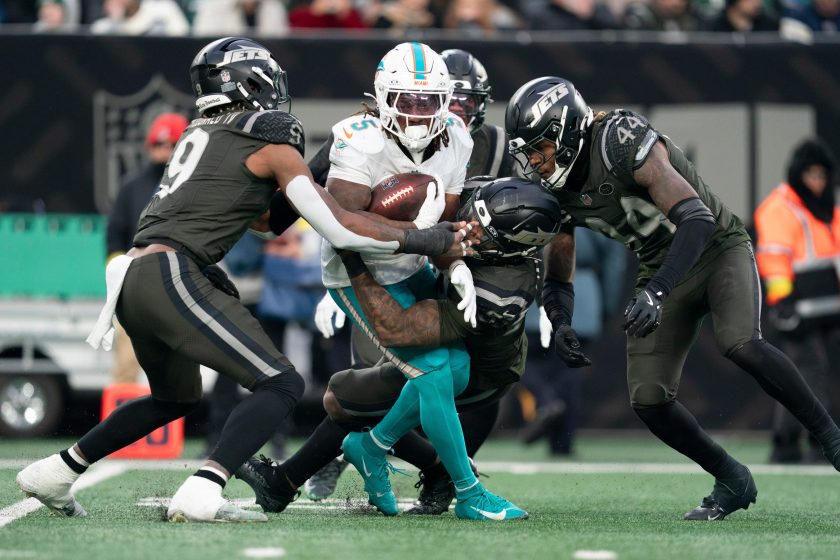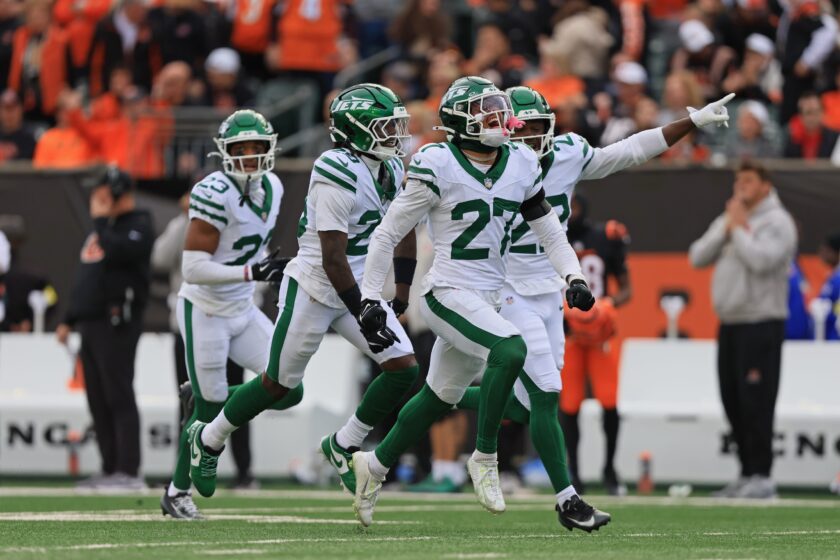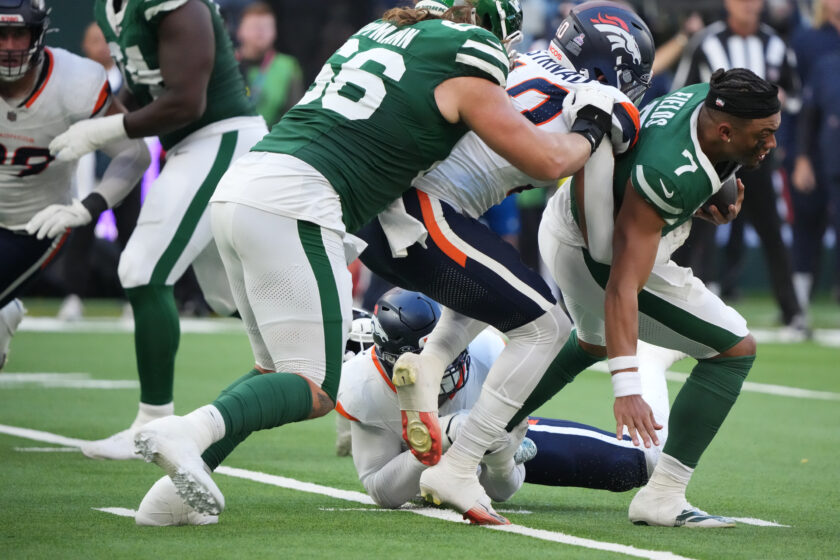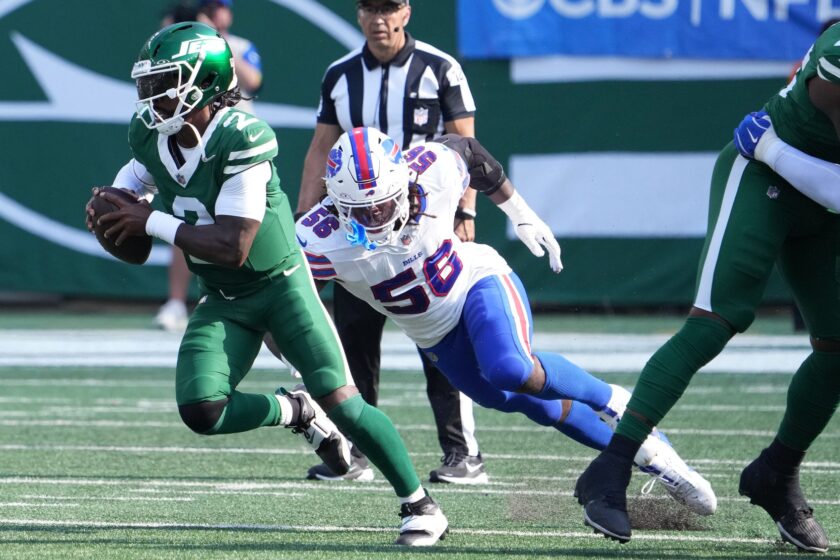New York Jets-Washington Redskins statistical scouting report
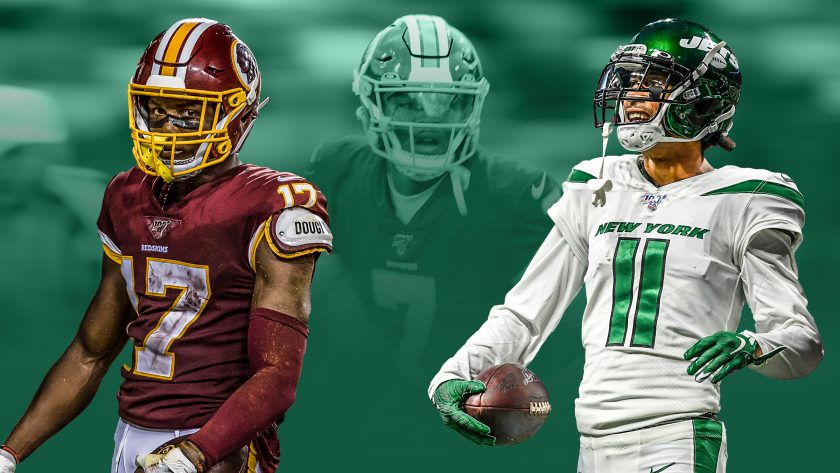
The New York Jets look for a second consecutive victory for the first time this season when they take on the Washington Redskins in D.C.
Throughout the season, I’ll be previewing the New York Jets‘ opponent each week with a look at their greatest strengths and weaknesses from a statistical standpoint.
Let’s dive into some key numbers on the Redskins heading into this Sunday’s battle of teams in contention for a top-5 pick.
[sc name=”Jets Title” text=”Redskins offense” ]Strength: Terry McLaurin
Terry McLaurin, a third-round rookie from Ohio State, has been the biggest bright spot on Washington’s offense.
McLaurin leads the Redskins with 62.1 receiving yards per game (497 total), and five touchdowns, which is more than twice as much as any other Redskin (despite missing one game). Among 2019 draft picks, McLaurin is tied for second in receiving yards per game (behind Marquise Brown) and total receiving yards (behind D.K. Metcalf), while he is tied for the lead in receiving touchdowns (with Metcalf, Mecole Hardman, and Darius Slayton).
The most dangerous aspect of McLaurin’s game is his deep ability. Among players with at least 30 receptions, McLaurin ranks fifth in air yards per reception (12.2), behind only Mike Williams, Mike Evans, Kenny Golladay and Stefon Diggs. Overall, McLaurin ranks ninth in yards per reception (15.5) and 13th in yards per target (9.6), among players with at least 30 catches.
Redskins quarterbacks have had by far their most success when throwing to McLaurin. Case Keenum, Dwayne Haskins, and Colt McCoy have had a 117.2 passer rating when targeting the rookie, their highest mark among any Redskin who has seen multiple targets this season.
Weakness: Clutch situations
The Redskins offense is terrible in most categories, ranking 29th in offensive DVOA and 31st in points per drive.
Both the run and pass games have been ineffective in D.C. The Redskins rank 27th in pass offense DVOA and 30th in rush offense DVOA.
Their passing game is 29th in net yards per attempt (5.4). In the run game, Washington does rank a respectable 17th in yards per attempt (4.3), however. Adrian Peterson has had an impressive season at age-34, averaging 61.4 yards per game on 4.3 yards per attempt.
[sc name=”Jets Center” ]Teams can make up for their struggles to move the football with efficient play in key scenarios, but Washington has not been able to do that. They are 29th in red zone touchdown rate (35.3 percent) and 31st in third-down conversion rate (24.2 percent).
Washington’s quarterback play on third down has been atrocious. They have moved the chains on 23.5 percent of third-down passing plays, worst in the NFL. Haskins and McCoy have been particularly awful, picking up a first on three of 27 third down plays (11.1 percent). Keenum has a more respectable rate of 29.6 percent, but that remains well below the league average of 36.6 percent.
[sc name=”Jets Title” text=”Redskins defense” ]Strength: Pass rush
The pass rush has been Washington’s most reliable unit. The Redskins rank 10th in pressure rate (25.5 percent) and 15th in sack rate (6.9 percent).
It has been a down year for Ryan Kerrigan. He has just two sacks and 26 pressures, putting him on track for career-lows in both categories.
However, the Redskins have gotten some help from the inside in the form of Matt Ioannidis. The fourth-year Redskin leads the team with 4.5 sacks and 30 pressures, setting him on pace to set new career-highs in each.
On the season, Ioannidis ranks 11th among interior defenders in total pressures. He ranks sixth in pass-rush productivity, a measure of pressures per snap with greater weight awarded to sacks. Since Week 3, Ioaniddis leads all qualified interior defenders in pass-rush productivity.
Washington’s pass rush comes into Week 11 on a hot streak. Over their past five games, the Redskins have picked up 16 sacks on a sack rate of 9.5 percent, a mark that would rank fourth in the NFL over the course of the entire 2019 season to date.
Weakness: Coverage
Despite a decent pass rush, the Redskins have still fielded one of the league’s worst pass defenses because of their terrible quality of coverage at all levels. Washington has allowed the league’s seventh-highest passer rating (100.7) and collected the fourth-fewest passes defended per game (2.9). The only other unit performing as poorly in both categories is the historically terrible Atlanta Falcons defense.
Perhaps most notably, the Redskins have allowed the highest completion percentage in the NFL, at a whopping 72.5 percent. Usually, completion percentage is not a stat that has any value, but in this case, I think it is a strong indicator of how weak Washington’s coverage has been this season. That is the third-highest mark allowed through nine games in NFL history.
There are quite a few Redskins who have been burnt toast in coverage. Josh Norman is the headliner. Washington’s big-money corner has allowed 55.3 yards per game, which ranks as the 11th-most at the position (one spot behind struggling Jets corner Darryl Roberts). Norman has allowed the fourth-highest passer rating (135.4), fifth-most touchdowns (five), and sixth-most yards per target (1.58) among cornerbacks.
After leading the NFL with eight touchdowns allowed in 2018, Norman has now given up 13 touchdowns over the past two seasons, two more than any other player.
[sc name=”Jets GM Joe T-Shirt” ]Rookie linebacker Cole Holcomb, a fifth-round pick from North Carolina, has been a liability in coverage. Among linebackers with at least 150 snaps in coverage, Holcomb has yielded the third-most yards per cover snap (1.67), third-most yards-after-catch per reception (9.8), and the fourth-highest passer rating (135.3). He ranks one spot behind Jets linebacker Neville Hewitt in both yards per cover snap and YAC allowed per reception.
Holcomb and fellow linebacker Jon Bostic have combined to give up 584 yards over 65 targets (9.0 per target), four touchdowns, and zero interceptions.
Special Teams’ notes: Shaky start for kicker Dustin Hopkins
The Redskins have the league’s eighth-worst placekicking DVOA, as Dustin Hopkins has had a mediocre start to the season.
Opportunities for Hopkins have been few and far between with the ineptitude of Washington’s offense, but he has still missed one or two more kicks than would be ideal over his small sample size. Hopkins has converted on just 11 of 14 (78.6 percent) field goal attempts despite kicking from the seventh-closest average distance among qualified kickers (35.6 yards). He has missed kicks from 39, 43, and 55 yards out.
Hopkins’ average make has been from 32.8 yards out, fourth-closest among qualified kickers.
On the plus side, Hopkins has yet to miss an extra point attempt, but he has only attempted nine of them. He has made 58 of his last 60 point-after tries for Washington (96.7 percent), over a span of 35 games.
[sc name=”Jets Link Next” link=”https://elitesportsny.com/2019/11/16/new-york-jets-defense-gregg-williams-deserves-tremendous-credit/” text=”Jets Defense, Gregg Williams Deserve Tremendous Credit” ]Jets/NFL at ESNY ----- Twitter: @Michael_Nania ----- Cool Your Jets Podcast with Ben Blessington

